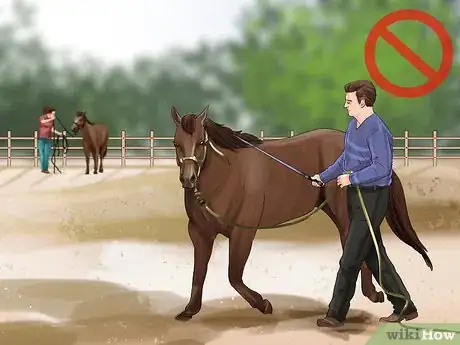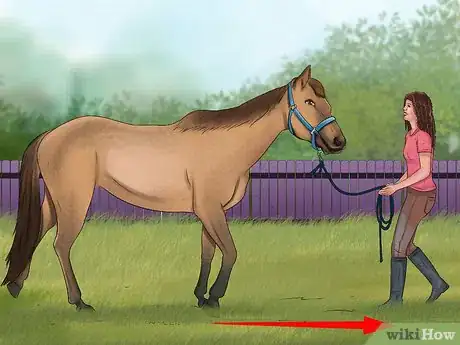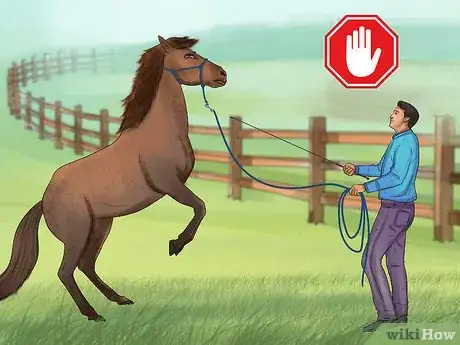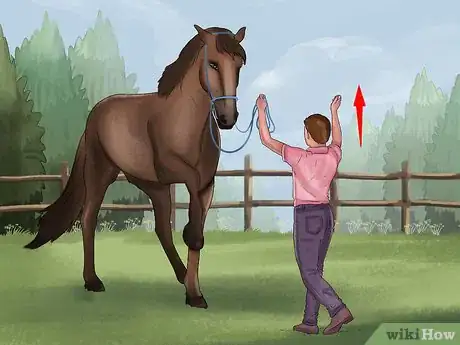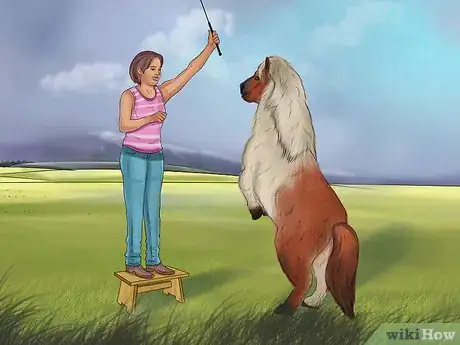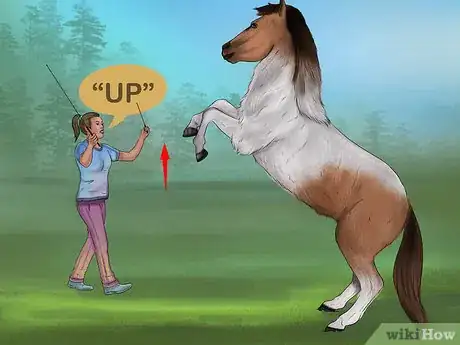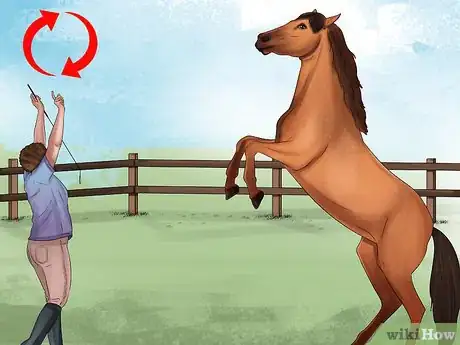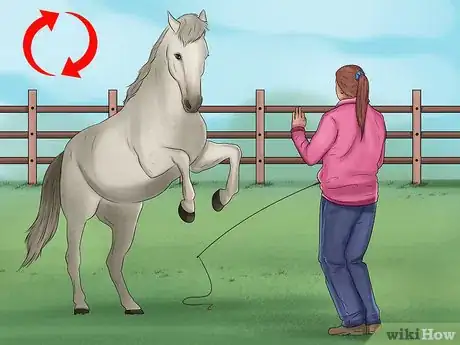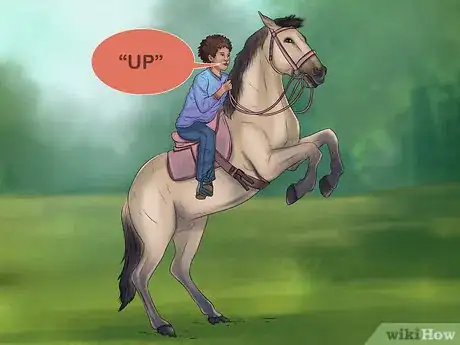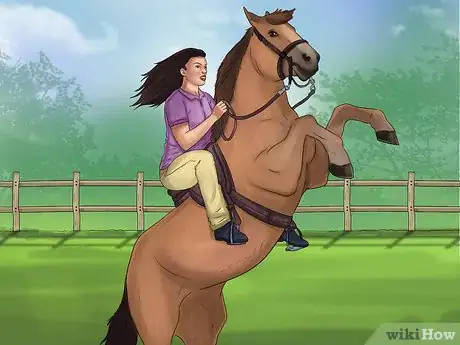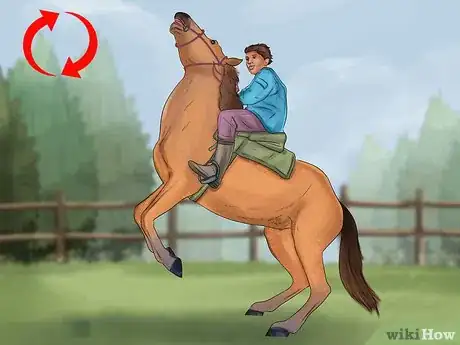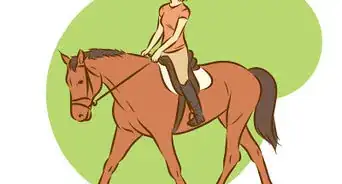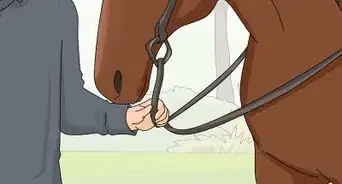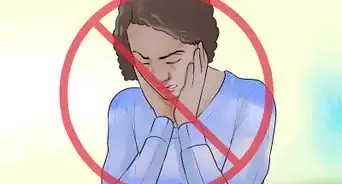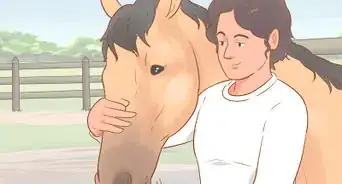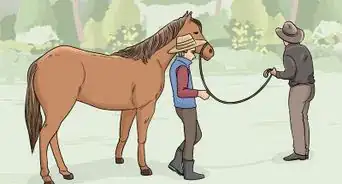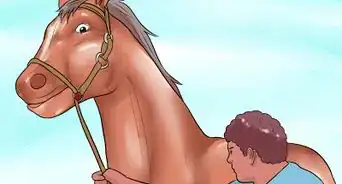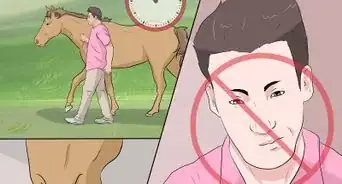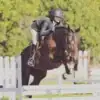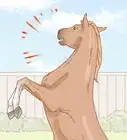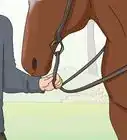This article was co-authored by Kate Jutagir. Kate Jutagir is an Equestrian Specialist, Hunter/Jumper Trainer, and the Owner of Blackhound Equestrian, a premier training barn located on 65 acres in Castro Valley, California. Originally designed to be a riding school used as a springboard for dedicated students into careers in the sport, Blackhound Equestrian has grown into a hunter/jumper training program for all levels focusing on providing a solid foundation needed for personal advancement in the sport. Kate has over 25 years of equestrian instruction and training experience. Her focus on developing horse and rider partnerships provides a complete equestrian education for both beginners and advanced riders alike.
There are 10 references cited in this article, which can be found at the bottom of the page.
This article has been viewed 80,259 times.
Training your horse to rear is a great opportunity to bond with them while adding another trick to their repertoire. You just want to make sure you’re taking a few safety precautions since rearing can be dangerous. Don’t worry—we’ll walk you through everything you need to know to teach your horse how to rear, including how to keep yourself and your horse safe.
Steps
Getting Your Horse Used to Rearing
-
1Lead your horse somewhere quiet so he can focus on you. A place with very few distractions is the best place. You want his complete attention to be on you. You also want your horse to be very relaxed and ready to be trained.
- Avoid a pasture with other horses or other animals.
- Avoid a pasture where other people are training.
- Pick a place that is as quiet and calm as possible.[1]
-
2Run forward with your horse, but with your back away from the horse. Leading and teaching by example is one of the best ways to train your horse. Run backwards in front of your horse, but not too quickly. Make sure to put enough distance between you and your horse so that you won't be trampled or run over by accident.
- Build your horse's momentum forward by running.
- Make sure your horse and you are running fast enough so that momentum is building.
- Keep a safe distance.
- Walk the pasture before so you don't run into a hole and hurt yourself.[2]
Advertisement -
3Stop your horse. Stop your horse safely and prepare to transfer his/her energy upward. Use both verbal and visual cues to stop your horse. Previous training will help immensely.
- Motion and/or verbally command your horse to stop.
- Keep a positive demeanor and praise your horse when he obeys you.
- Keep a safe distance.[3]
-
4Make an upward motion with your arms toward your horse. Once you've stopped, you need to direct your horse upward. Direct your horse upward by making a motion with your arms. This needs to be done as quickly as possible once the horse has stopped.
Using Verbal Commands
-
1Stand somewhere high to direct your horse. Now that your horse is used to rearing and to your motioning for him to rear, take it to the next level and reinforce the verbal commands you may have been using before. Find a spot to stand, preferably where you'll be higher than your horse. You'll want your horse see you clearly and follow your direction. If you are tall, just stand on the ground in front of your horse.[6]
-
2Raise an arm with a treat and command your horse “up” or “rear.” Take your treat in one hand and move it up, sternly saying “up.” He will stretch his neck to try to eat the treat. When he moves his head upward a little bit, reward him with the treat.[7]
-
3Repeat this process as long as needed. Each time you repeat this, slowly raise your hand a little bit higher. Your horse will continue to stretch his neck, and then slowly move up on his hind feet. Work with your horse and don't tease him with the treat – make sure he always gets it once he's put forth the effort.[8]
-
4Continue this routine until your horse fully rears. Eventually, he'll rear to the appropriate level in order to get his treat. Remember several things when doing this:
- You need to have patience with your horse.
- Continually praise your horse and reward him with treats.
- This process could take several days or longer.[9]
Riding Your Horse and Rearing
-
1Ride your horse and rear. After you've completed the initial motion and verbal training process, you can now try to rear with your horse. Make sure to do so in an appropriate setting, with someone watching you in case there is an accident. Also, make sure to lean forward when your horse rears. Leaning backwards could result in you falling off, your horse falling over, and both of you being injured.[10]
-
2Use the same "up" cue when riding. When you're on your horse, try to use your command. He may not respond, so use leg pressure, tug lightly on the reins, and press hard into the saddle. Continue to say "up" the whole time until he responds. Don't kick or yell at him if he does not respond the way you want him to.
-
3Release pressure when your horse raises slightly. When he raises slightly, sit lightly, release the reins, take away your legs, and praise your horse. Reward him with a treat afterword. Also, make sure to use a positive tone when you talk to him.
-
4Continue this process until he gets confident, and rears on cue. Over time you'll be able to perfect how your horse rears, how high, and when. Again, you need to be patient in this process and work with your horse as a member of your team. Don't show your frustration, and never take it out on your horse.[11]
Expert Q&A
-
QuestionIs it good to teach your horse to rear?
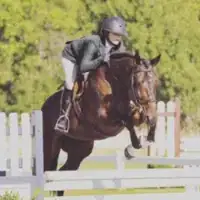 Kate JutagirKate Jutagir is an Equestrian Specialist, Hunter/Jumper Trainer, and the Owner of Blackhound Equestrian, a premier training barn located on 65 acres in Castro Valley, California. Originally designed to be a riding school used as a springboard for dedicated students into careers in the sport, Blackhound Equestrian has grown into a hunter/jumper training program for all levels focusing on providing a solid foundation needed for personal advancement in the sport. Kate has over 25 years of equestrian instruction and training experience. Her focus on developing horse and rider partnerships provides a complete equestrian education for both beginners and advanced riders alike.
Kate JutagirKate Jutagir is an Equestrian Specialist, Hunter/Jumper Trainer, and the Owner of Blackhound Equestrian, a premier training barn located on 65 acres in Castro Valley, California. Originally designed to be a riding school used as a springboard for dedicated students into careers in the sport, Blackhound Equestrian has grown into a hunter/jumper training program for all levels focusing on providing a solid foundation needed for personal advancement in the sport. Kate has over 25 years of equestrian instruction and training experience. Her focus on developing horse and rider partnerships provides a complete equestrian education for both beginners and advanced riders alike.
Equestrian Specialist & Trainer Only do it if you have a very specific reason for that, like getting into a rodeo or some kind of performance. Work with a trainer that specializes in that. Rearing can be a very dangerous activity. It can really get you hurt if you're up there and you're not expecting it, and it can also be dangerous for the horse. Horses rely on balance, and that is probably the most unbalanced position.
Only do it if you have a very specific reason for that, like getting into a rodeo or some kind of performance. Work with a trainer that specializes in that. Rearing can be a very dangerous activity. It can really get you hurt if you're up there and you're not expecting it, and it can also be dangerous for the horse. Horses rely on balance, and that is probably the most unbalanced position. -
QuestionCan I rear the horse without training it by pulling the reins while riding?
 Community AnswerNo. Pulling the reins will cause the horse to stop, not rear.
Community AnswerNo. Pulling the reins will cause the horse to stop, not rear. -
QuestionHow do I get an old and stubborn horse to rear?
 Community AnswerTry to ease into it, as using force won't help. If your horse still can't rear after some tries, your training could be lacking something or she may just not be able to. Consult a professional trainer.
Community AnswerTry to ease into it, as using force won't help. If your horse still can't rear after some tries, your training could be lacking something or she may just not be able to. Consult a professional trainer.
Warnings
- Don't make the rearing cue to be a cue you already use. If you make the cue pulling on the reins, which you do to stop the horse, that will be very dangerous because even time you ask them to stop, the horse will rear. So make the cue something you don't normally use.⧼thumbs_response⧽
- Be patient or your horse may get angry and will try to buck at the same time as they rear.⧼thumbs_response⧽
- This is dangerous - don't just buy a horse and expect to do this; you need training.⧼thumbs_response⧽
- Some horses once taught will try to rear all the time.⧼thumbs_response⧽
- Don't beat your horse for not performing this trick properly; eventually the horse will beat you!⧼thumbs_response⧽
- Like working with any large animal, there are risks. Always wear a helmet and protective gear. Practice this with a quiet horse under supervision.⧼thumbs_response⧽
- Never work alone, if you or your horse gets injured you will need help.⧼thumbs_response⧽
- Never dig your heels in with spurs (or just your heels) and yank hard on the reins. That is cruel and is a blatant form of animal abuse.⧼thumbs_response⧽
- Do not teach a horse to rear if they are not fully trained, confident in the saddle, and always well mannered.⧼thumbs_response⧽
- Horses can become unpredictable once they know this trick. If you want to sell your horse, you must tell the new owner of this habit and the cues for it.⧼thumbs_response⧽
- Do not lean backwards when your horse is rearing. Your horse can fall backwards and crush you. If you are riding western, it is even more important. If your horse falls backwards the horn of the saddle can puncture your chest, leading to serious injury or death.⧼thumbs_response⧽
References
- ↑ http://www.equisearch.com/article/avoid-distractions-16912
- ↑ http://www.lovehorsebackriding.com/horse-training-tips.html
- ↑ http://animals.mom.me/cueing-horse-stop-3719.html
- ↑ http://www.thehorse.com/articles/12159/trick-training-your-horse-to-success
- ↑ http://www.lovehorsebackriding.com/horse-training-voice-commands.html
- ↑ http://www.horses-and-horse-information.com/articles/horse-training-young.shtml
- ↑ http://www.lovehorsebackriding.com/trick-training-your-horse.html
- ↑ https://horsesatliberty.wordpress.com/2013/07/05/bring-joy-to-repetition-in-liberty-horse-training/
- ↑ https://horsesatliberty.wordpress.com/2013/07/05/bring-joy-to-repetition-in-liberty-horse-training/
About This Article
If you want to teach your horse how to rear, start by taking it to a quiet place with no other animals where it can focus on you without distraction. To begin, face your horse and lead it forward while you run backwards to build up momentum. Be sure to keep a safe distance to avoid being trampled. To make your horse rear, stop running and make an upward motion with your arms to direct your horse’s energy upward. Pair this signal with a verbal command like “up” or “rear” to reinforce the command. Repeat this exercise several times, and reward your horse each time it rears properly to help it learn. For more training tips, like how to rear your horse while you ride it, keep reading!
